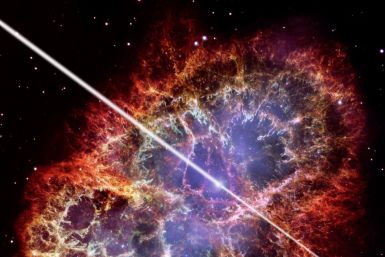Animals and plants across the world are shrinking from the effects of climate change on their habitats, scientists warn.
Heather Knight, founder of Marilyn Munrobot in New York, is attempting to bring art and science together. As shown at a Wired 2011 event, she is trying to develop charismatic robots to create social interactions between them and humans.
Scientists with NASA's Operation IceBridge are set to embark on its third year of aerial surveys of Antarctica's changing ice cover.
A T-shaped design has been announced of the winner of a competition to find the new design of the next generation of pylons
A team of amateur astronomers spotted a previously unknown asteroid about 18 million miles away from Earth.
An attempt by Iran to launch a live monkey into space has ended in failure, touted as their first step to launching a man into space, reports have said.
Around 30,000 species of land animals - including human beings - may have descended from a common ancestor that had a well-developed sixth sense, according to a new study.
A study conducted by researchers from the University of Stirling indicates that use of contraceptive pills could influence a woman's choice of partners.
Researchers at the University of Alberta have made a discovery which could completely change science's understanding of one of the cell's most basic processes.
The discovery of Lake Ellsworth in Antartica has got the world hooked into what may exist in those mysterious waters. It has been miraculously been cut off from the world for at least 125,000 years. The ice sheet covering the lake has trapped the Earth's geothermal heat, preventing it from freezing. The solid ice sheet above the lake is almost 3 kilometers thick. It is one of Antartica's 387 known Subglacial lakes.
Now, a team of British explorers are all set for an expedition into the ...
Astronomers have discovered a cluster of more than two dozen previously unknown brown dwarfs, otherwise known as "failed stars", including one of the puniest of its kind.
NASA has released an interactive, educational video game called NetworKing that depicts how the Space Communication and Navigation (SCaN) network operates
A study has found that life span of people with HIV in UK has increased by 15 years over a decade.
In research conducted by the archaeologist at the University of Bristol discovered an extremely rare Egyptian coffin at Torquay Museum.
A lake concealed under the ice in Western Antarctica may reveal details about the kind of life forms that existed on the planet millions of years ago.
The devastating earthquake that struck Japan earlier this year may have rattled the highest layer of the atmosphere before it shook the Earth, a discovery which could be used to provide warning for big earthquakes.
A team of British scientists will travel to Antarctica in the hope of finding new life forms trapped beneath 3km of ice and reveal what Earth looked like up to a million years ago.
The world's largest virus has been discovered in the sea off Chile, harbouring more than 1,000 genes.
A new study from University College London and the University of Warwick suggests that critically ill patients could benefit from drugs or procedures that promote the body's production of nitric oxide.
Short Gamma-ray bursts from supernova and star collisions from the other side of the galaxy could lead to the end of life on Earth, scientists have revealed.
A team at Manchester University have developed a sandwich-like architecture of the material graphene that could see the material move closer to replacing silicon.
Scientists have discovered that people who are very optimistic about the outcome of events could in fact have a "faulty" brain.
Scientists have discovered a mechanism that causes an aggressive from of lung cancer to re-grow despite being treated with chemotherapy.
Scientists have discovered a link between changes in solar activity and recent cold temperatures in parts of Europe and North America.
Draconid Meteor Shower Lights up Saturday Sky (PHOTOS)
The Environment Agency, a UK-based watchdog organization responsible to the British and Welsh governments, has found evidence of a colony of seahorses in the Thames, during a routine fisheries survey at Greenwich.
A spacecraft orbiting Venus has discovered an ozone layer in the planet's atmosphere, similar to that of Earth and Mars.
ESA's Mars Express has released images showing an unusual accumulation of young craters in the large outflow channel called Ares Vallis while older craters have been reduced to ghostly outlines by the scouring effects of ancient water.
Crab Pulsar's Gamma Rays Baffle Scientists. A group of international astrophysicists,Using the Very Energetic Imaging Telescope Array System (VERITAS),spotted gamma rays with energies exceeding 100 billion electron-volts emitted from the Crab Pulsar supernova. The fast spinning crab pulsar supernova was discovered in 1968 and was the first to be connected with a supernova remnant.
the crab pulsar's emissions were more than 100 gigaelectronvolts which are100 billion times more energetic ...
A team of scientists are using measurements of remote gamma ray emissions from the most distant massive explosions in the universe to try and better understand dark energy, the invisible force behind the universe's accelerating expansion.




































